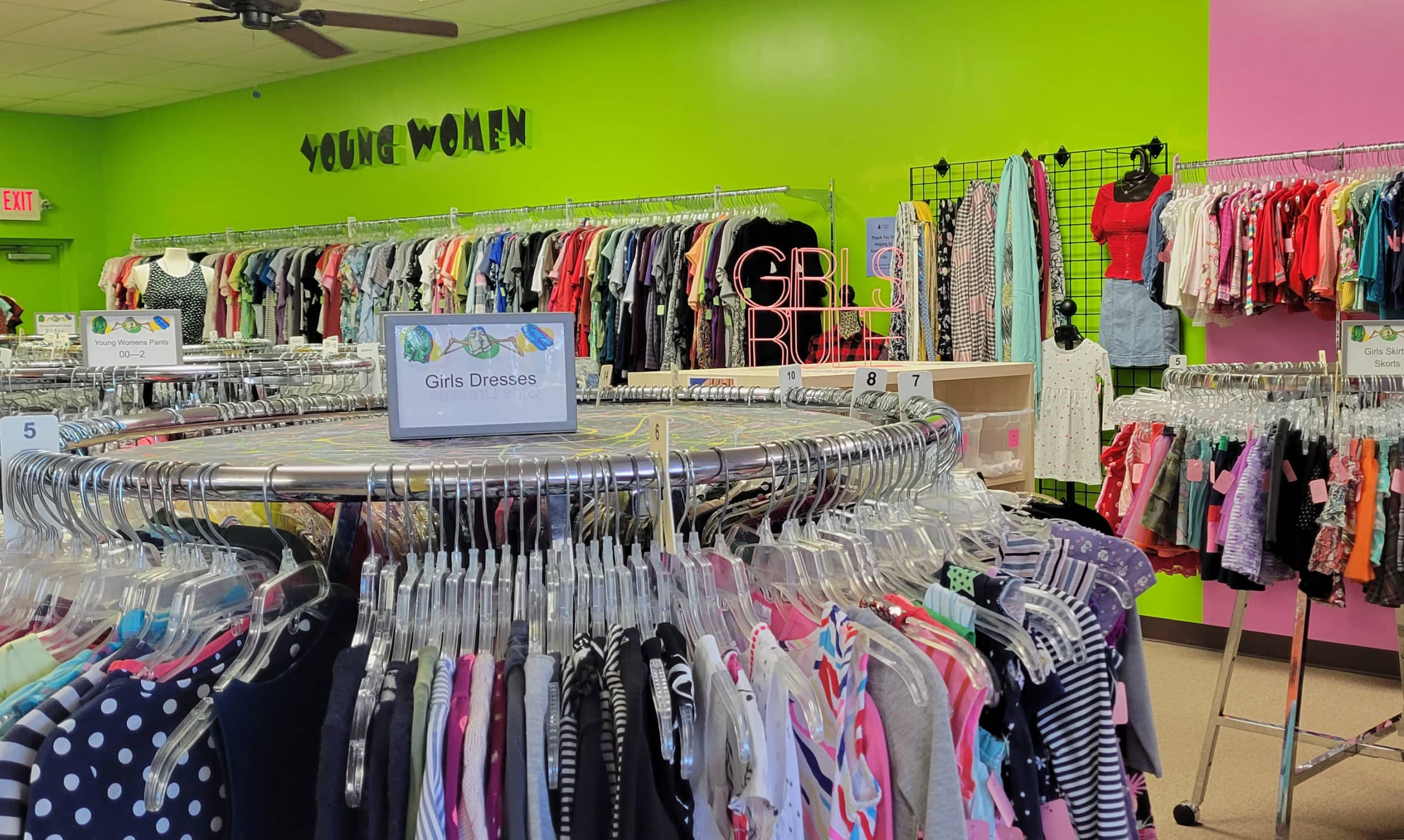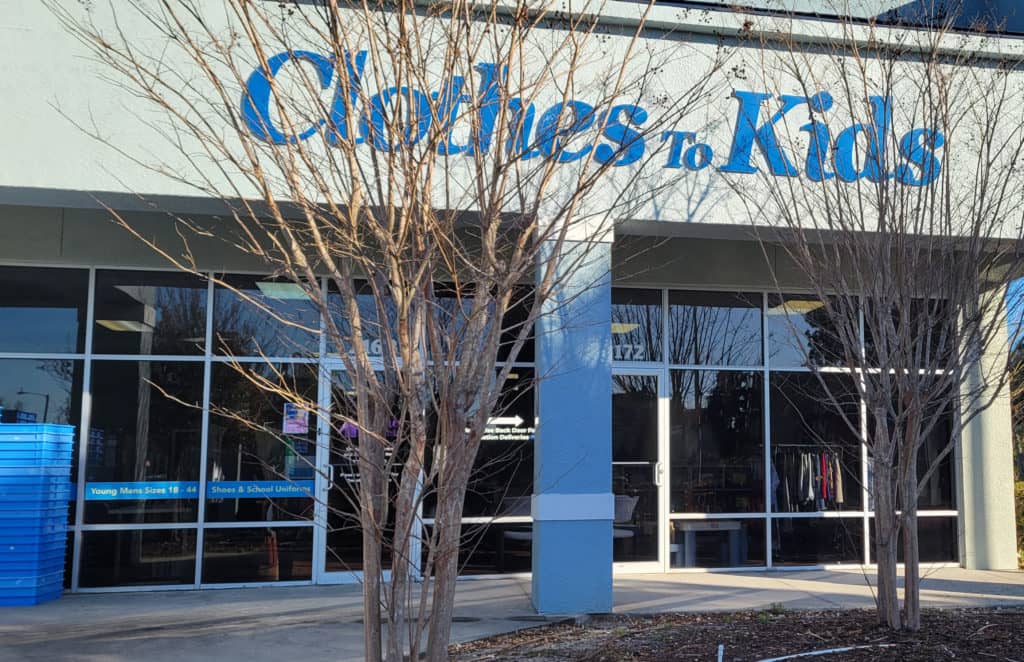Thrive
Waveney Ann Moore: Thousands of Pinellas County school children are homeless

It’s distressing to think that some Pinellas County public school students and their families are so desperate that they’re forced to find surreptitious shelter in self-storage units.
That children are doing homework under the glare of Walmart parking lot lights as they huddle with their families in cars that have become their homes.
Or that kids go to school with dirty clothes because there’s nowhere to wash them. Or don’t go to school at all, because the vehicle in which they live has no gas to get them there.
The more fortunate crowd into the homes of friends and relatives, or in sometimes squalid, overpriced motel rooms.
If you have doubts about any of this, speak to Dr. Christine Cantrell. She’s the HEAT (Helping Educate All in Transition) Liaison for the Pinellas County School District. Simply, she works to help homeless students and their families.
For most of us, it’s a hidden problem, a curiosity, as such, to see school buses stop at cheap motels along U.S. 19. But the district has data to prove that the crisis is very real. This week, Pinellas public schools counted 3,554 homeless students.
“As of today, it’s definitely more than we had last year,” Cantrell said Wednesday. “We are continuing to identify more and more students each day.”
By the end of the school year, she expects the number to reach 4,000 or more. While the majority are living in shared quarters, in hotels, motels or homeless shelters, there are the others.
“We are seeing a dramatic increase in the street homeless – families living in their cars,” Cantrell said.
Before the pandemic, the HEAT program might identify one or two homeless students a month living in a car. “Now it’s almost two to three a week,” Cantrell said. “We had a family literally walking the streets with their possessions” trying to find somewhere to live.
The homeless crisis disproportionately affects Black students, who make up 19 percent of the school district’s population, but account for 40 percent of those who are homeless. Hispanic students, on the other hand – 18.3 percent of the district – account for 17 percent of the homeless. White students, whose percentage is 53 percent, make up 34 percent of the homeless.
Several St. Petersburg schools are among the top 10 for students experiencing homelessness. They are Azalea Middle School, Campbell Park Elementary, Fairmount Park Elementary and Gibbs High School.
Others in that group are Lealman Avenue Elementary, Pinellas Central Elementary, Eisenhower Elementary, Lealman Innovation Academy, Dunedin Highland Middle School and New Heights Elementary.
Cantrell noted that several of the schools with high homeless numbers are in the vicinity of motels used by social service agencies to provide temporary shelter for families, or are near where families themselves are paying to keep a roof over their heads.
Traditional shelters are often full, she said, with the pandemic putting additional strain on the system. And, if you think Pinellas County doesn’t have enough to handle, some families who’ve lost everything to natural disasters in other states – think wildfires and tornadoes – are making their way here, Cantrell said. Some are fortunate to find shelter with relatives.
The HEAT program trains school-based employees to identify potential signs of homelessness and assess the needs of students and their families. Cantrell and her team connect them with social service agencies. There’s also a focus on helping students stay on track academically.
The caring is not limited to academic staff, Cantrell said, adding that a cafeteria worker might notice a student hoarding their breakfast and lunch and mention it to someone who can help. A bus driver might pass on information about a child getting off at a different spot, perhaps near a shelter or motel.
Most homeless students, though, are identified during enrollment, at the beginning of the year, when parents can indicate that they’re sharing a home, have moved in with grandparents, or even living in a car, motel or shelter.
But it’s not always that simple. Parents are embarrassed and scared that their children might be taken away if the Department of Children and Families finds out about their situation. Cantrell emphasizes, though, “It’s not against the law to be homeless.”
Amid the instability, children still have to go to school and try to learn, she said. High schoolers have to focus on graduating. And there’s an increase in mental health issues. Yet, there are successes, even as some teenagers live in their cars and hold down jobs, Cantrell said.
The pandemic and jobs lost as a result, along with the dire lack of affordable places to live, have exacerbated the homeless problem, advocates like Cantrell say. Furthermore, people might be shut out of housing because of bad credit or inability to come up with deposits required to secure a place to live. Families are paying $300 to $400 a week for a motel or hotel – even more for somewhere that’s decent and safe – which can make it impossible to save for a move to a permanent home, Cantrell said.
She also mentioned something interesting. Involuntary motel residents can find their weekly rates skyrocketing around holidays and events – like the Clearwater Jazz Festival and spring training.
There’s hope, though.
Through the American Rescue Plan Act, the HEAT program has gotten funding to address issues related to the pandemic. Cantrell said $1.9 million has been allotted to help meet several objectives, including the hiring of another staff member to find families who disappeared during the pandemic.
Some funds will be used to help offset the cost of transportation to get students back to the schools they attended before they lost their homes.
The money will also be used to work with social service agencies. The district will extend its partnership with Clothes To Kids, a nonprofit with stores in St. Petersburg, Clearwater and Tampa that provide free clothing to students in need.

A teenager was among the shoppers when I visited the Clothes To Kids St. Petersburg store shortly after it opened Thursday. Students who qualify for free or reduced-price meals, along with those “in crisis,” are eligible to shop at Clothes To Kids stores, explained executive director Jennifer Jacobs during a telephone call.
“We have a phenomenal relationship with the school district in Pinellas, as well as in Hillsborough,” she said. “The school social workers, the school guidance counselors, the administrators, refer kids to us and know we can help with clothes.”
Students can shop twice in a school calendar year. “When they come, they are getting a pair of shoes. They are getting five new pairs of socks, five new pairs of underwear. They get four bottoms, five tops. The girls get a dress. If the girl is in the bra-wearing age, she can get up to two, if we have them available,” Jacobs said, going on to mention “fun accessories” and jackets that are available during Florida’s cool season.
Clothes To Kids is sensitive to those who walk through their doors, Jacobs said. “We are going to treat everybody with dignity,” she said.
The HEAT team also turns to Directions for Living for help in carrying out its mission. April Lott, president and CEO of the agency, spoke to me about Family Works, a program that was launched at seven St. Petersburg schools experiencing the greatest need.
In the past two years, the Family Works program has stabilized about 150 students.
Funds from the American Rescue Plan Act will enable Directions for Living “to continue to extend what they were doing, because it was so successful,” Cantrell said.
“We wrap our arms around these ‘littles’ and their caregivers,” Lott said. “Typically, it is a single mom and we just wrap our arms around them and basically what it takes to get them in stable housing.”
That often means providing the first and last month’s rent and security deposit.
“We provide them not just financial support, but emotional support, basic needs. Really, whatever that family needs. We stay with that family for about nine months until we know for sure they’re good to go … All of us as parents need support. It takes a village. We need people who can surround us when things are difficult.”
And for many Pinellas County families, times have certainly been challenging. Cantrell believes it’s important to raise awareness of their difficulties, but warns against being judgmental.
“People don’t choose to be homeless, for the most part,” she said.
“People have to live and sometimes just need a chance. These families want the best for their children just like anybody else does … Homelessness can really change the trajectory of a child’s life.”








Gina Pirie
January 27, 2022at7:50 am
This story needs to be told, to be heard by all. How can we help? Where can we donate clothing and other goods? What about monetary donations? Or the individual needs of each school such as the one mentioned about toiletries? More info for the public to be informed about this and to reach out and assist would be great.
Karen Kirkpatrick
January 26, 2022at2:42 am
Glad to see you are still writing and reporting, Ms. Moore. The housing crisis in Pinellas County, especially St. Petersburg, has allotted new victims to homelessness. Our hopes are hanging on a new mayor and a new city council and others in leadership positions. But it is citizens with businesses such as this which truly make a difference in the daily lives of those waiting for a long-term solution. Kudos!
James T Goolsby
January 24, 2022at1:34 pm
Thanks to good pepole doing the right thing God Bless you
rp
January 24, 2022at12:31 pm
Sad but the heart of the problem is the level that homes and rental prices have skyrocketed to in the last couple of years. Apartments average over a thousand dollars for a tiny studio.
Rose Hayes
January 22, 2022at5:17 pm
Maximo Elementary has 78 displaced families as of 12/1/2021. Gibbs High School has a Grab N Go Room for students to pick up toiletries and clothes. I volunteer there. Right now, we need toiletries, soap, deodorant, lotion, toothpaste. We have plenty of tooth brushes due to a recent donation.
This being ‘houseless’ is a huge issue. Churches, Civic Organizations, please help!!!!!
Pamela Elaine Jackson
January 22, 2022at3:56 pm
I was very grateful to be able to shop for my eight year old daughter about a week ago. With only one income in our household we’re barely able to keep our heads above water. We certainly have no control on how fast children grow. Therefore we will always be thankful for Clothes to Kids and all they do not just for my family but for the entire community.
Bee
January 22, 2022at12:00 pm
I give to Clothes to Kids 4 times a year n donate gently used clothes from my fortunate grandkids. It is the most worthy cause, these ladies are Angels ❤️
Mirela Setkic
January 22, 2022at11:44 am
Thank you for writing about this important problem in our community (that can happen to anyone). The trauma caused by homelessness and its longterm effect on children’s lives is a very serious issue. I truly hope that this prompts our local officials and community members to take action. This is inhumane and unacceptable.
Patti
January 22, 2022at10:52 am
Thank you Sharon. My feelings exactly. We also are in need of more housing for the elderly. Dunedin officials have lost sight of our “Delightful Dunedin “ mentality. The City Council is building a Taj Mahal they are calling City Hall spending millions of dollars money that could benefit so many worthy cause’s. I could go on but I won’t, thanks for the opportunity to share.
Will Michaels
January 22, 2022at9:57 am
The public conversation regarding the dire need for affordable housing as I have heard it has not adequately focused on the immediate needs of the homeless, especially homeless children. That should be a priority as we seek solutions that will make a real difference. Thank you Waveney for speaking to this.
Sharon w
January 22, 2022at6:51 am
Amen to that. I am involved with a food pantry in Dunedin. Countless folks experiencing homelessness, no transportation, living in motel rooms charging exhorbitant rates come through our food lines. And yet, our city continues to build high end residential and commercial properties hoping the northerners will come & spend money to line their coffers. And they are coming & the city will now scramble to build more tennis courts as quickly as possible because the pickle ballers are taking over.
What about our locals who can’t afford to live or eat in Dunedin. Shame on all of us who allow our city officials to behave with such greedy unkindness!
Janan V Talafer
January 21, 2022at4:45 pm
A powerful story and so disturbing. In the midst of the city’s growing wealth, many families are living in desperate circumstances.